
Discover Saint-Pierre Ferry Terminal: The Gateway to French Charm in North America
Saint-Pierre Ferry Terminal: Your Gateway to the French Charm and Natural Beauty of Saint Pierre and Miquelon.
Nestled in the heart of the small yet vibrant archipelago of Saint Pierre and Miquelon, the Saint-Pierre Ferry Terminal serves as the bustling entryway to a unique blend of French and North American cultures. As you disembark, the charming town of Saint-Pierre greets you with its picturesque streets, colorful houses, and a warm, welcoming atmosphere that makes you feel instantly at home. The terminal itself is a hub of activity, with ferries arriving from and departing to the nearby Canadian coast, making it a vital link for both locals and tourists alike. The terminal is just a stone's throw away from the town center, where you can immerse yourself in the rich history and culture of this French overseas territory. Wander through the cobblestone streets, visit the local museums, and savor the delicious French cuisine at the many quaint cafes and restaurants. The island's unique blend of old-world charm and modern amenities ensures that there is something for everyone to enjoy. From the Saint-Pierre Ferry Terminal, you can easily explore the natural beauty of the islands. Take a boat tour to see the stunning coastline, go hiking on the scenic trails, or simply relax on the serene beaches. The terminal also serves as a starting point for excursions to the larger island of Miquelon, where you can experience even more of the region's unspoiled landscapes and abundant wildlife.
Local tips in Saint-Pierre Ferry Terminal
- Arrive early to the terminal to avoid long lines and ensure a smooth boarding process.
- Bring Euros, as the local currency is Euros and not all places accept credit cards.
- Dress in layers, as the weather can change quickly and be quite unpredictable.
- Take advantage of the duty-free shops at the terminal for some unique local souvenirs.
- Consider renting a bike or scooter to explore the island at your own pace.
Discover Saint-Pierre Ferry Terminal: The Gateway to French Charm in North America
Nestled in the heart of the small yet vibrant archipelago of Saint Pierre and Miquelon, the Saint-Pierre Ferry Terminal serves as the bustling entryway to a unique blend of French and North American cultures. As you disembark, the charming town of Saint-Pierre greets you with its picturesque streets, colorful houses, and a warm, welcoming atmosphere that makes you feel instantly at home. The terminal itself is a hub of activity, with ferries arriving from and departing to the nearby Canadian coast, making it a vital link for both locals and tourists alike. The terminal is just a stone's throw away from the town center, where you can immerse yourself in the rich history and culture of this French overseas territory. Wander through the cobblestone streets, visit the local museums, and savor the delicious French cuisine at the many quaint cafes and restaurants. The island's unique blend of old-world charm and modern amenities ensures that there is something for everyone to enjoy. From the Saint-Pierre Ferry Terminal, you can easily explore the natural beauty of the islands. Take a boat tour to see the stunning coastline, go hiking on the scenic trails, or simply relax on the serene beaches. The terminal also serves as a starting point for excursions to the larger island of Miquelon, where you can experience even more of the region's unspoiled landscapes and abundant wildlife.
When is the best time to go to Saint-Pierre Ferry Terminal?
Iconic landmarks you can’t miss
Hotel Robert
Experience the charm of Saint-Pierre at Hotel Robert, your cozy retreat with modern amenities and easy access to local attractions.

Saint Pierre et Miquelon Tour Booking Agency and Parking Service
Discover the charming French culture and stunning landscapes of Saint Pierre et Miquelon, your gateway to an unforgettable island adventure.
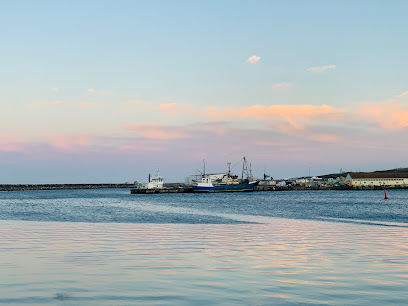
Ark Museum
Discover the captivating history and culture of St. Pierre & Miquelon at the Ark Museum, a national treasure in the heart of Saint-Pierre.
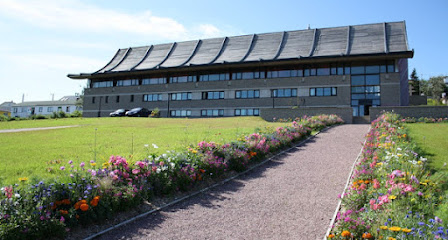
Auberge Saint-Pierre
Experience comfort and local charm at Auberge Saint-Pierre, the perfect base for exploring the scenic beauty of Saint-Pierre & Miquelon.

Complexe Hôtelier Les Terrasses du Port
Discover luxury and tranquility at Complexe Hôtelier Les Terrasses du Port, your perfect getaway in the serene landscapes of St. Pierre & Miquelon.
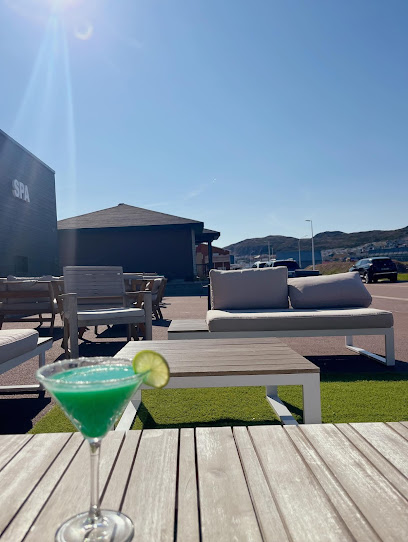
Heritage Museum
Explore Saint-Pierre & Miquelon's rich history at the Heritage Museum, where engaging exhibits and local stories await every visitor.
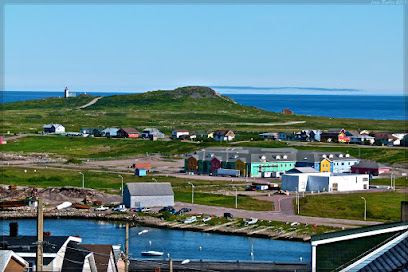
Nuits Saint-Pierre, Hôtel Unique
Discover the charm of St. Pierre & Miquelon at Nuits Saint-Pierre Hotel, where comfort meets adventure in an idyllic setting.
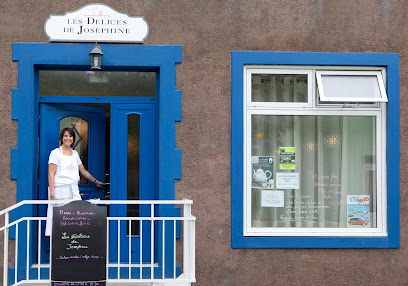
Cathedral of Saint Pierre at Saint Pierre et Miquelon
Discover the architectural beauty and spiritual serenity of the Cathedral of Saint Pierre in Saint Pierre et Miquelon, a must-visit for travelers.

CHEZ MARIE JO
Discover the charm of St. Pierre at Chez Marie Jo, your cozy bed & breakfast with local flavor and warm hospitality.

Saint Pierre Island
Experience the unique blend of French culture and breathtaking landscapes on stunning Saint Pierre Island, a hidden gem in the North Atlantic.

Tourist Office of Saint-Pierre and Miquelon
Explore Saint-Pierre and Miquelon: Your Essential Guide at the Tourist Office for Unforgettable Adventures and Local Insights.
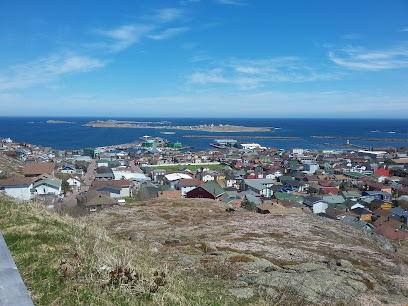
Archipélitude Museum
Explore the captivating maritime history of St. Pierre & Miquelon at the Archipélitude Museum on Île aux Marins, a must-visit local history museum.
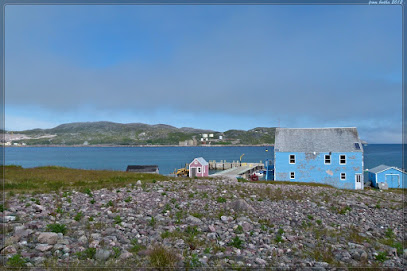
SPM Ferries Ticket Office and Maritime Station
SPM Ferries Ticket Office and Maritime Station: Your gateway to the breathtaking islands of Saint-Pierre & Miquelon, offering seamless ferry services and local insights.
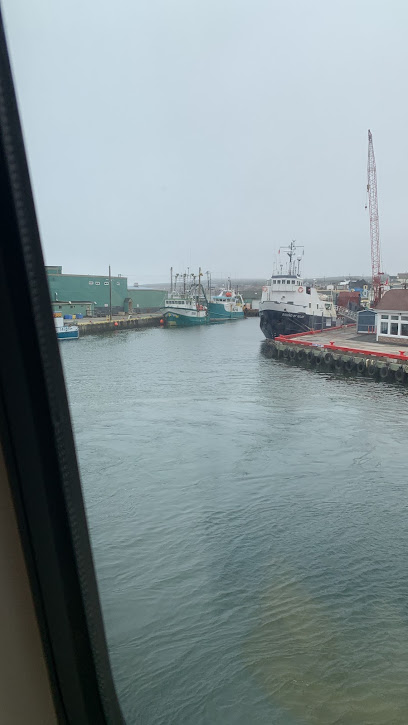
St. Pierre Ferry Office
Experience the breathtaking journey from Fortune to the picturesque islands of St. Pierre and Miquelon with St. Pierre Ferry Office.
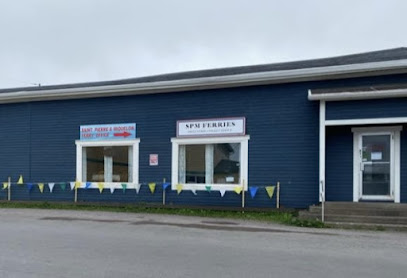
Le Caillou Blanc
Discover the breathtaking landscapes and rich culture of St. Pierre & Miquelon with Le Caillou Blanc's unforgettable guided tours.

Unmissable attractions to see
Frenchman's Cove Provincial Park
Explore the natural beauty of Frenchman's Cove Provincial Park, a serene getaway in Newfoundland and Labrador offering stunning landscapes and outdoor adventures.
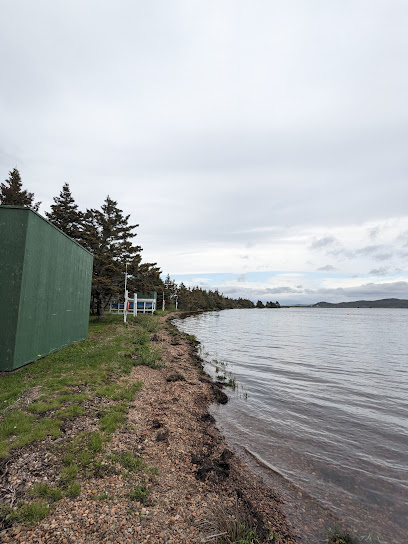
Heritage Museum
Unveil the captivating history of Saint-Pierre & Miquelon at the Heritage Museum, a treasure trove of culture and heritage.

Fortune Head Geology Centre
Explore the geological wonders of Fortune Head Geology Centre in Newfoundland and Labrador, a fascinating museum for curious travelers and geology enthusiasts.
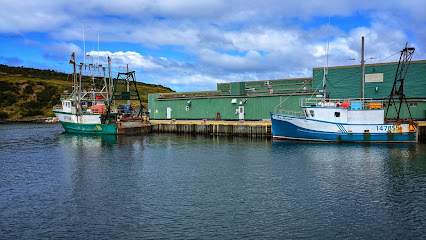
Cathedral of Saint Pierre at Saint Pierre et Miquelon
Discover the architectural beauty and spiritual serenity of the Cathedral of Saint Pierre in Saint Pierre et Miquelon, a must-see for every traveler.
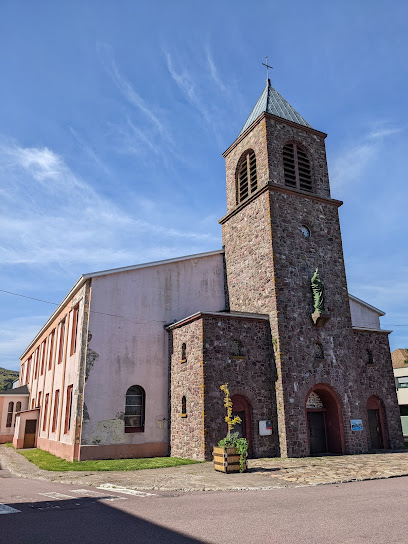
Nature Interpretation Center
Explore the natural wonders of St. Pierre & Miquelon at the Nature Interpretation Center, your gateway to the region's unique ecosystem and wildlife.

Archipélitude Museum
Discover the maritime heritage and cultural stories of St. Pierre & Miquelon at the Archipélitude Museum on the beautiful Ile aux Marins.

Essential places to dine
Le Feu de Braise
Discover delicious wood-fired pizzas and local flavors at Le Feu de Braise in Saint-Pierre – where every bite tells a story.
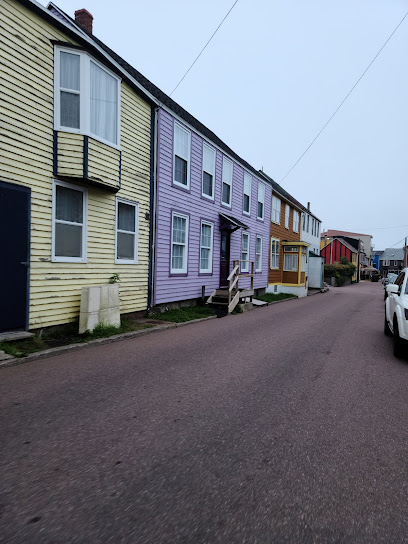
Les P'tits Graviers
Discover authentic flavors at Les P'tits Graviers – where local ingredients meet exquisite culinary artistry in St. Pierre & Miquelon.
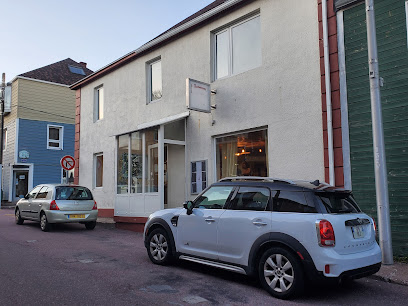
Hotel Robert
Discover comfort and local charm at Hotel Robert in Saint-Pierre, your gateway to exploring St. Pierre & Miquelon's stunning landscapes.

Le Select
Discover Le Select in Saint-Pierre – where exquisite flavors meet warm hospitality in a charming setting.
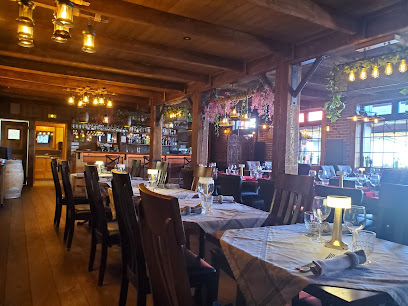
Auberge Saint-Pierre
Discover comfort and local charm at Auberge Saint-Pierre, your perfect base for exploring stunning St. Pierre.

Complexe Hôtelier Les Terrasses du Port
Discover unparalleled luxury at Complexe Hôtelier Les Terrasses du Port – your ultimate retreat in Saint-Pierre & Miquelon.
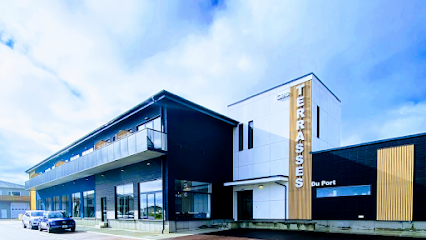
Café de la gare
Discover exquisite flavors at Café de la Gare in Saint-Pierre, where delightful dishes meet warm hospitality amidst stunning coastal views.

Auberge Quatre Temps
Experience comfort at Auberge Quatre Temps, your cozy retreat in St. Pierre & Miquelon’s enchanting landscape.
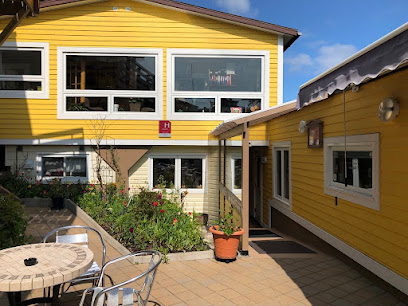
Nuits Saint-Pierre, Hôtel Unique
Discover the charm of St. Pierre & Miquelon at Nuits Saint-Pierre, Hôtel Unique – where comfort meets local culture.

2 Lapins
Discover the heartwarming café experience at 2 Lapins in Saint-Pierre - where great coffee meets local charm.
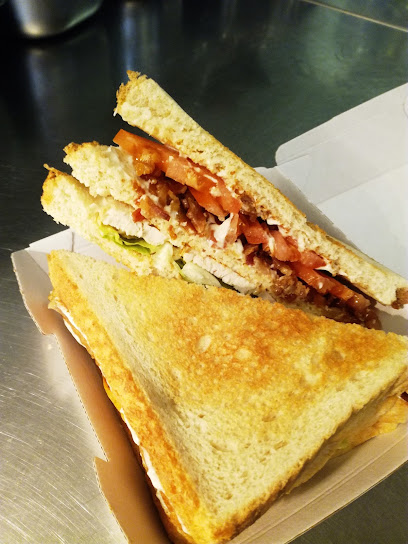
Chez Txetxo
Discover the charm of Chez Txetxo in St. Pierre - where local flavors meet warm hospitality in a cozy bar setting.
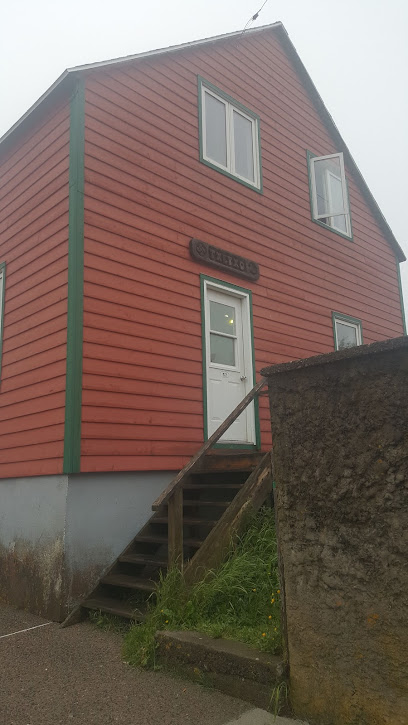
Pizzéria Chez Alain
Discover the authentic taste of Italy at Pizzéria Chez Alain in Saint-Pierre - where every slice tells a story.

Le Bar à Quai
Experience authentic seafood delights at Le Bar à Quai in Saint-Pierre – where exquisite flavors meet stunning harbor views.
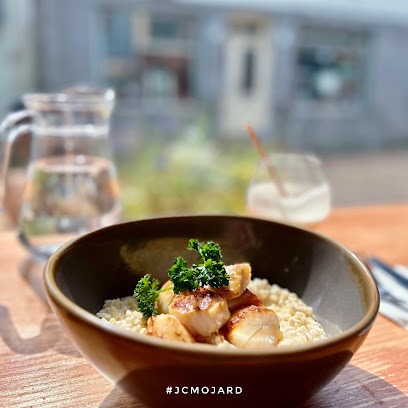
Roc Café
Experience the charm of Roc Café in Saint-Pierre – your cozy retreat for delightful coffee and light meals.

L'Ilot
Experience authentic local flavors at L'Ilot, a top restaurant in St. Pierre & Miquelon offering delicious cuisine and inviting ambiance.
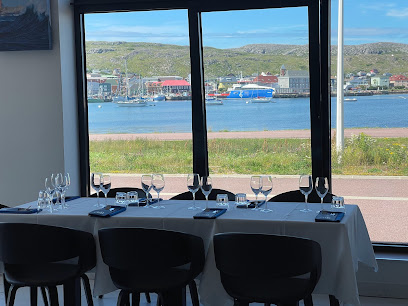
Markets, malls and hidden boutiques
Hotel Robert
Discover the perfect blend of comfort and local charm at Hotel Robert, your ideal base for exploring the beauty of St. Pierre & Miquelon.

Saint Pierre et Miquelon Tour Booking Agency and Parking Service
Explore the unique charm of Saint Pierre et Miquelon with expert guidance and seamless travel arrangements.

Ark Museum
Discover the rich cultural history of St. Pierre & Miquelon at Ark Museum, a national gem showcasing captivating artifacts and archives.
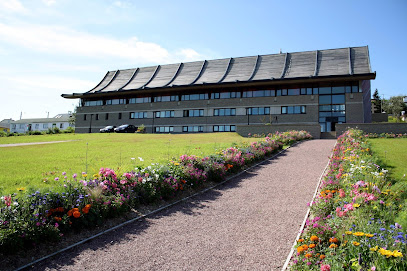
Heritage Museum
Explore the captivating history and culture of Saint-Pierre & Miquelon at the Heritage Museum, a hidden gem for history enthusiasts.
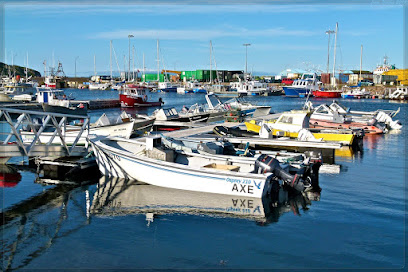
Nuits Saint-Pierre, Hôtel Unique
Explore the unique charm of Nuits Saint-Pierre, Hôtel Unique, a cozy hotel in St. Pierre & Miquelon offering personalized service and local insights.
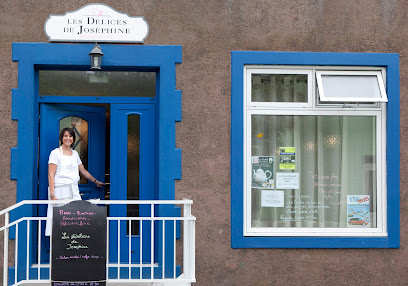
Chez Txetxo
Discover Chez Txetxo, a charming bar in Saint-Pierre, perfect for savoring local drinks and enjoying a cozy atmosphere.

Graves Bakery and Pastry
Experience the sweet flavors of Saint-Pierre at Graves Bakery and Pastry, where every bite is a taste of local tradition and artisanal craftsmanship.

Tourist Office of Saint-Pierre and Miquelon
Explore the enchanting Saint-Pierre and Miquelon, a unique blend of French culture and breathtaking North Atlantic beauty.
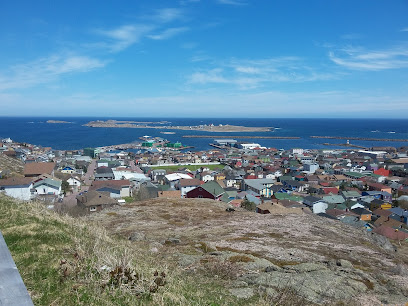
Ré-Créations - Parfumerie & Cadeaux
Discover the unique scents and delightful gifts at Ré-Créations - Parfumerie & Cadeaux in Saint-Pierre, a fragrant journey awaits you.

Roc Café
Discover the cozy charm of Roc Café in Saint-Pierre, where delicious beverages and local culture await every traveler.

Victoire&Léon
Discover the vibrant fashion scene at Victoire&Léon, Saint-Pierre's premier clothing store for all ages and styles.
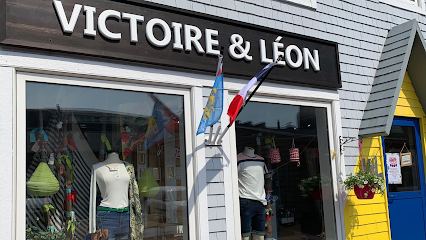
SPM Ferries Ticket Office and Maritime Station
Experience the charm of St. Pierre & Miquelon with SPM Ferries, your gateway to stunning landscapes and rich French culture.
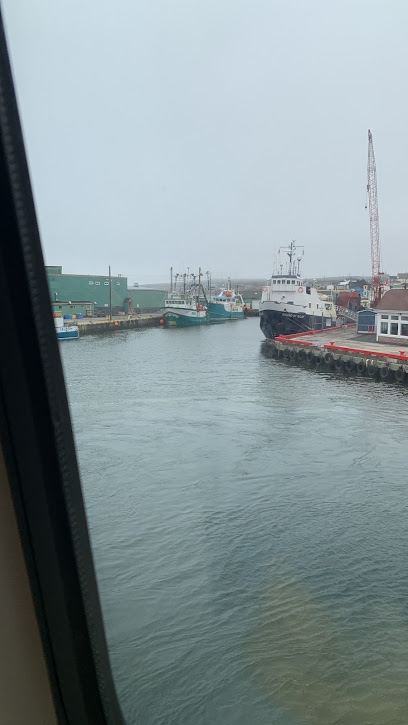
JouéClub
Explore the magical world of toys at JouéClub in Saint-Pierre et Miquelon, where every child's imagination comes to life.
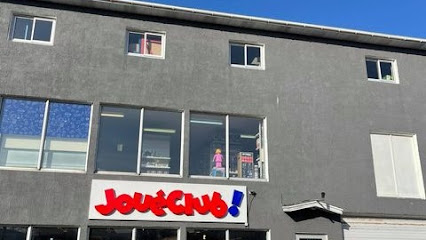
Free Cartier
Explore the charm of St. Pierre at Free Cartier, a unique gift shop offering local artisanal treasures and memorable souvenirs.

Gare Maritime de Saint Pierre SPM
Discover the enchanting Gare Maritime de Saint Pierre, your gateway to the breathtaking islands of St. Pierre and Miquelon, rich in culture and natural beauty.

Essential bars & hidden hideouts
Le Feu de Braise
Experience the authentic taste of gourmet pizza at Le Feu de Braise in Saint-Pierre, where local flavors meet culinary passion.
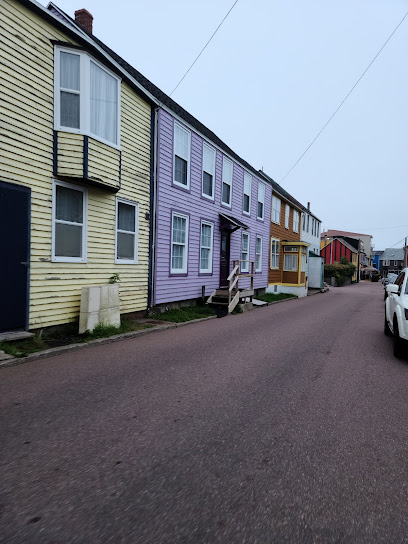
Les P'tits Graviers
Experience the flavors of Saint-Pierre at Les P'tits Graviers, where culinary excellence meets warm hospitality in a charming setting.
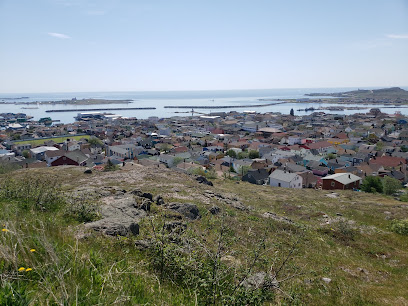
Bar Le Rustique
Experience the lively spirit of Saint-Pierre at Bar Le Rustique, where local flavors and vibrant nights come alive.
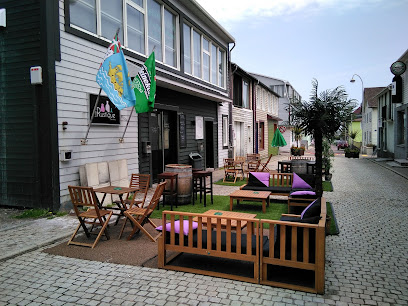
Le Select
Discover the culinary delights of Le Select in Saint-Pierre, where fresh, local ingredients and a warm atmosphere create unforgettable dining experiences.
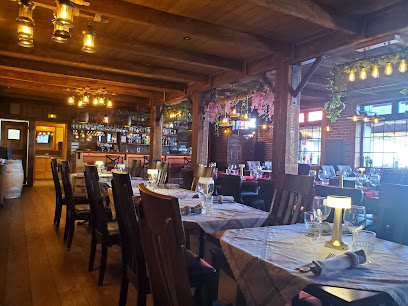
Complexe Hôtelier Les Terrasses du Port
Discover unparalleled luxury and relaxation at Complexe Hôtelier Les Terrasses du Port, your gateway to the beauty of Saint-Pierre and Miquelon.
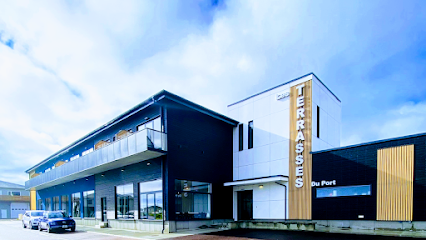
Café de la gare
Experience the flavors of Saint-Pierre at Café de la Gare, where local cuisine meets a cozy atmosphere for an unforgettable dining experience.
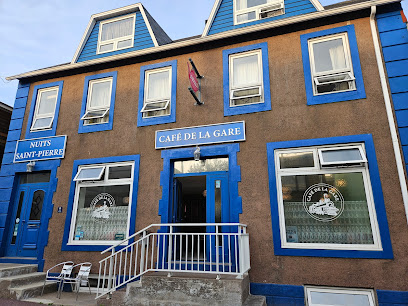
Nuits Saint-Pierre, Hôtel Unique
Experience the serene charm of Nuits Saint-Pierre, Hôtel Unique - your gateway to the beauty and culture of St. Pierre & Miquelon.
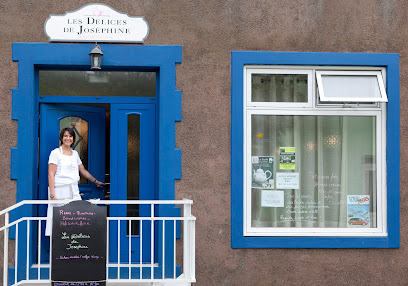
Chez Txetxo
Discover the vibrant local scene at Chez Txetxo, a cozy bar in Saint-Pierre offering an array of drinks and a taste of the island's culture.
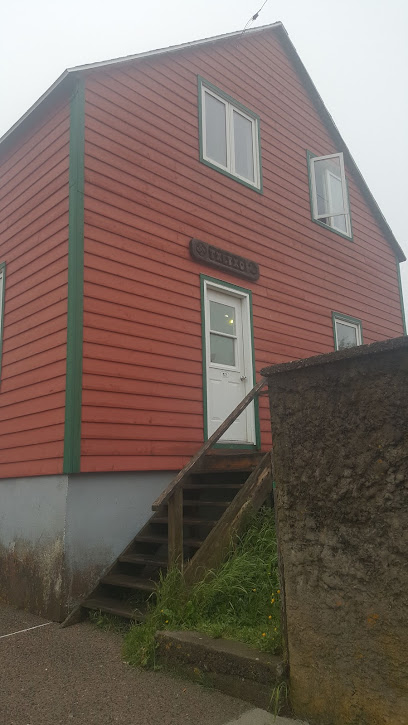
Le Bar à Quai
Experience the vibrant culinary heritage of Saint-Pierre at Le Bar à Quai, where fresh local ingredients meet exceptional dining.
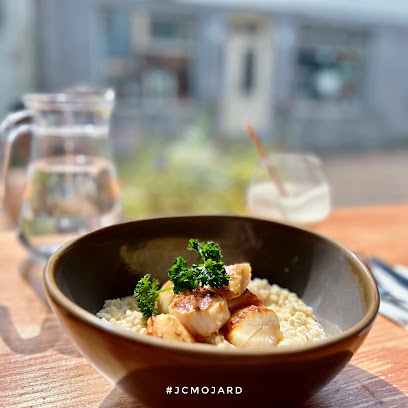
Le Baratin
Experience the vibrant local culture at Le Baratin, a cozy bar in Saint-Pierre known for its delicious drinks and welcoming atmosphere.

The Jezequel House
Experience authentic local cuisine in a charming setting at The Jezequel House, located in the stunning Ile aux Marins of St. Pierre & Miquelon.
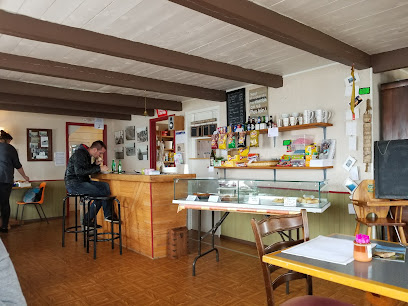
Roc Café
Discover the cozy Roc Café in Saint-Pierre, your go-to spot for delicious coffee and local treats amid a charming atmosphere.

Artisanal brewery at the bottom of the Anse
Experience the craft of brewing at Brasserie Artisanale de l'Anse, where local flavors and artisanal techniques come together in a cozy atmosphere.
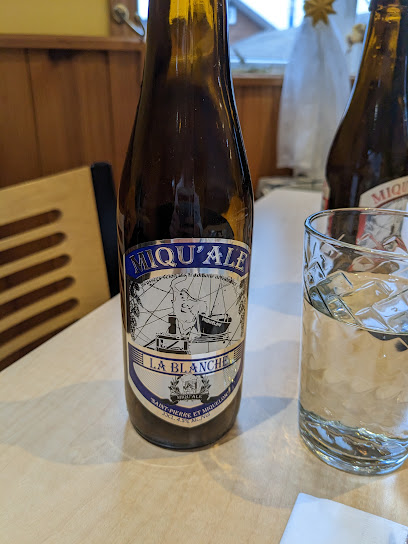
SPM Ferries Ticket Office and Maritime Station
Explore the enchanting islands of Saint-Pierre and Miquelon from the SPM Ferries Ticket Office, your gateway to maritime adventures.
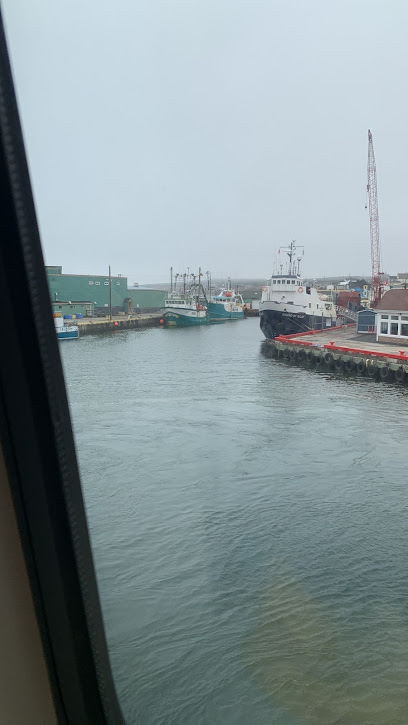
Le Buddy
Discover the culinary delights at Le Buddy in St. Pierre, where local ingredients meet exceptional cuisine in a warm and inviting atmosphere.
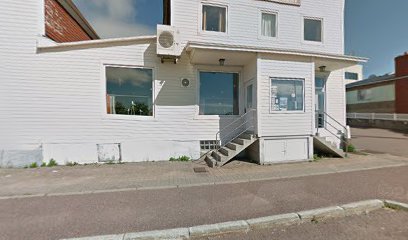
Local Phrases
-
- HelloBonjour
[bon-zhoor] - GoodbyeAu revoir
[oh re-vwar] - YesOui
[wee] - NoNon
[nohn] - Please/You're welcomeS'il vous plaît/De rien
[seel voo pleh/duh ree-ehn] - Thank youMerci
[mehr-see] - Excuse me/SorryExcusez-moi/Désolé
[ex-kew-zay mwah/deh-zoh-lay] - How are you?Comment ça va?
[koh-mohn sah vah] - Fine. And you?Bien. Et toi?
[byen/eh twah] - Do you speak English?Parlez-vous anglais?
[par-lay voo ahn-glay] - I don't understandJe ne comprends pas
[zhuh nuh kohm-prahn pah]
- HelloBonjour
-
- I'd like to see the menu, pleaseJe voudrais voir le menu, s'il vous plaît
[zhuh voo-dray vwahr luh meh-nyoo, seel voo pleh] - I don't eat meatJe ne mange pas de viande
[zhuh nuh mahnzh pah duh vyand] - Cheers!Santé!
[sahn-tay] - I would like to pay, pleaseJe voudrais payer, s'il vous plaît
[zhuh voo-dray pay-ay, seel voo pleh]
- I'd like to see the menu, pleaseJe voudrais voir le menu, s'il vous plaît
-
- Help!À l'aide!
[ah lehd] - Go away!Allez-vous en!
[ah-lay vooz on] - Call the Police!Appelez la police!
[ah-peh-lay lah polees] - Call a doctor!Appelez un médecin!
[ah-peh-lay uh meh-deh-sahn] - I'm lostJe suis perdu(e)
[zhuh swee pair-doo] - I'm illJe suis malade
[zhuh swee mah-lahd]
- Help!À l'aide!
-
- I'd like to buy...Je voudrais acheter...
[zhuh voo-dray zah-shtay...] - I'm just lookingJe regarde juste
[zhuh ruh-gahrd zhewst] - How much is it?Combien ça coûte?
[kohm-byen sah koot] - That's too expensiveC'est trop cher
[say troh shair] - Can you lower the price?Pouvez-vous baisser le prix?
[poo-veh voo beh-say luh pree]
- I'd like to buy...Je voudrais acheter...
-
- What time is it?Quelle heure est-il?
[kell uhr eh-teel] - It's one o'clockIl est une heure
[eel eh zewn uhr] - Half past (10)Dix heures et demie
[dees uhr ay dehm-yeh] - MorningMatin
[mah-tan] - AfternoonAprès-midi
[ah-pray mee-dee] - EveningSoir
[swahr] - YesterdayHier
[yehr] - TodayAujourd'hui
[oh-zhoor-dwee] - TomorrowDemain
[duh-mahn] - 1Un
[uhn] - 2Deux
[duh] - 3Trois
[twah] - 4Quatre
[kah-truh] - 5Cinq
[sank] - 6Six
[sees] - 7Sept
[set] - 8Huit
[wheet] - 9Neuf
[nuff] - 10Dix
[dees]
- What time is it?Quelle heure est-il?
-
- Where's a/the...?Où est...?
[oo eh...] - What's the address?Quelle est l'adresse?
[kell eh lah-dress] - Can you show me (on the map)?Pouvez-vous me montrer (sur la carte)?
[poo-veh voo muh mohn-tray (sir lah kart)] - When's the next (bus)?Quand est le prochain (bus)?
[kahn eh luh proh-shahn (bus)] - A ticket (to ....)Un billet (pour ....)
[uhn bee-yay (poor)]
- Where's a/the...?Où est...?
History of Saint-Pierre Ferry Terminal
-
The Saint-Pierre Ferry Terminal was established in the early 20th century as a critical maritime hub for the islands of Saint Pierre and Miquelon. Initially, it served as a gateway for trade and transportation between the islands and mainland Canada, significantly boosting the local economy and fostering connections with nearby territories.
-
During the Prohibition era in the United States from 1920 to 1933, Saint Pierre and Miquelon emerged as a significant hub for alcohol smuggling. The Saint-Pierre Ferry Terminal played a pivotal role in this clandestine trade, with ships frequently transporting illicit liquor to and from the islands. This period saw a surge in economic activity and an influx of visitors to the terminal.
-
The 1960s marked a period of modernization for the Saint-Pierre Ferry Terminal. As the demand for more efficient and larger vessels grew, the terminal underwent significant upgrades. These improvements included the construction of new docks, enhanced navigational aids, and expanded passenger facilities, ensuring the terminal could accommodate the increasing maritime traffic.
-
The 1980s witnessed a tourism boom in Saint Pierre and Miquelon, with the Saint-Pierre Ferry Terminal at the heart of this growth. The terminal became a primary entry point for tourists eager to explore the unique French culture and scenic beauty of the islands. This influx of visitors led to further enhancements in the terminal's infrastructure and services.
-
The Saint-Pierre Ferry Terminal is not just a transportation hub; it is also a cultural landmark. It hosts numerous festivals and events that celebrate the maritime heritage of the islands. One notable event is the annual Fisherman's Festival, which attracts locals and tourists alike, featuring traditional music, dance, and culinary delights.
-
In recent years, the Saint-Pierre Ferry Terminal has embraced environmental sustainability. Initiatives include the implementation of eco-friendly technologies and practices aimed at reducing the terminal's carbon footprint. These efforts reflect a growing awareness and commitment to preserving the pristine natural environment of Saint Pierre and Miquelon.
Saint-Pierre Ferry Terminal Essentials
-
Saint-Pierre Ferry Terminal is the primary gateway to the archipelago of Saint Pierre and Miquelon. The most common way to reach the terminal is by ferry from Fortune, Newfoundland, Canada. Ferries operate regularly, with schedules varying seasonally. Be sure to check the latest timetable before planning your trip. Additionally, flights from Halifax and Montreal to Saint-Pierre Airport (FSP) are available, followed by a short taxi ride to the terminal.
-
Once you arrive at the Saint-Pierre Ferry Terminal, a variety of transportation options are available. Taxis are readily accessible and can take you to your accommodation or around the island. Car rentals are available for those who prefer to explore at their own pace. Bicycles can also be rented for a more eco-friendly and leisurely way to see the sights. Public buses operate on the island, but schedules may be limited, especially outside peak tourist seasons.
-
The official currency in Saint Pierre and Miquelon is the Euro (EUR). Credit cards are widely accepted in most hotels, restaurants, and shops. However, it is advisable to carry some cash for smaller establishments and local markets. ATMs are available in Saint-Pierre, especially near the Ferry Terminal, but it is always good to have some Euros on hand before arriving.
-
Saint Pierre and Miquelon is generally a safe destination for tourists. Crime rates are low, and violent crime is rare. However, as with any travel destination, it is wise to take basic precautions: avoid walking alone at night in unfamiliar areas and keep an eye on personal belongings in crowded places. There are no specific high-crime areas targeting tourists, but remaining vigilant is always recommended.
-
In case of emergency, dial 17 for police assistance or 18 for medical emergencies and fire services. The local hospital, Centre Hospitalier François Dunan, is well-equipped to handle medical situations. Pharmacies are available for minor health issues. It is advisable to have travel insurance that covers medical emergencies. For non-urgent matters, you can visit the local police station or contact your embassy if necessary.
-
Fashion: Do dress in layers, as the weather can be unpredictable. Avoid overly casual or beachwear clothing in town. Religion: Do respect local customs and any religious sites you visit. Public Transport: Do be courteous to drivers and fellow passengers. Don't eat or drink on public transport. Greetings: Do greet people with a polite 'Bonjour.' A handshake is also customary. Eating & Drinking: Do try local dishes and accept food graciously. Don’t be overly critical of the local cuisine, as hospitality is a valued trait.
-
To experience Saint-Pierre Ferry Terminal like a local, consider visiting the local markets where you can buy fresh seafood and traditional French pastries. Engage with the locals, who are known for their friendliness and willingness to share stories about the island's unique history and culture. A visit to the Archipelitude Museum provides deeper insights into the local heritage. Don’t miss the opportunity to explore the scenic landscapes and coastal paths, which offer breathtaking views of the Atlantic.
Trending Landmark in Saint-Pierre Ferry Terminal
-
Hotel Robert
-
Saint Pierre et Miquelon Tour Booking Agency and Parking Service
-
Ark Museum
-
Auberge Saint-Pierre
-
Complexe Hôtelier Les Terrasses du Port
-
Heritage Museum
-
Nuits Saint-Pierre, Hôtel Unique
-
Cathedral of Saint Pierre at Saint Pierre et Miquelon
-
CHEZ MARIE JO
-
Saint Pierre Island
-
Tourist Office of Saint-Pierre and Miquelon
-
Archipélitude Museum
-
SPM Ferries Ticket Office and Maritime Station
-
St. Pierre Ferry Office
-
Le Caillou Blanc
Nearby Cities to Saint-Pierre Ferry Terminal
-
Things To Do in Saint-Pierre Airport
-
Things To Do in Langlade
-
Things To Do in Miquelon
-
Things To Do in Charlottetown
-
Things To Do in Bar Harbor
-
Things To Do in Acadia National Park
-
Things To Do in Bangor
-
Things To Do in Camden
-
Things To Do in Rockland
-
Things To Do in Waterville
-
Things To Do in Augusta
-
Things To Do in Brunswick
-
Things To Do in Lewiston
-
Things To Do in Quebec City
-
Things To Do in South Portland








